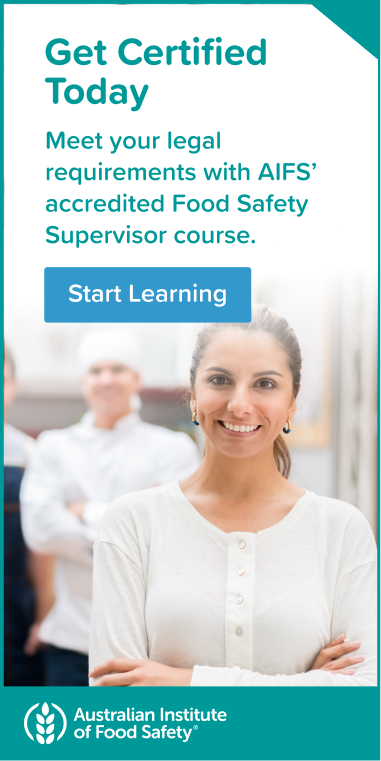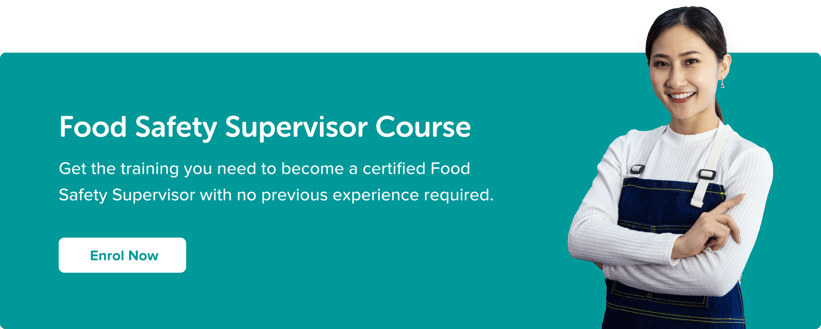.jpg?width=820&height=462&name=Adobe%20Express%20-%20file%20(64).jpg)
Food contamination occurs when a food item is spoiled or adulterated with a different compound. There are three types of food contamination: chemical, biological and physical.
Here we take a closer look at chemical contamination. Some of the most common sources of chemical contamination include pesticides and herbicides from unwashed produce, and industrial chemicals like those found in cleaning products.
Chemical contaminants include:
Common Causes of Chemical Contamination
Preservatives
Preservatives are ingredients added to food to help it keep longer, uphold its nutritional value or maintain the quality of its appearance. Examples of preservatives include nitrates used in meat products or sulphites used in wine.
Adding too much preservative to a food can be harmful to human health. Always use reputable suppliers and follow instructions when using these products.
Toxic metals
Toxic metal contamination can occur when using food containers, utensils, or pots and pans that have been manufactured using materials that were non-food grade, or unsuitable for the purpose for which they are being used.
Additionally, storing acidic food in galvanized metal containers can cause chemical contamination. It is recommended, instead, to use food-grade plastic containers.
Agricultural chemicals
Agricultural chemicals include herbicides, pesticides and fertilisers that may be present on produce.
It is imperative to always wash fruits and vegetables. Even with a thick skin or rind, there is still danger of transferring chemicals from the outside of the fruit or vegetable to the inside when you cut into or peel the product.
Choose fresh produce suppliers for your business that have programs in place to prevent contamination.
Industrial chemicals
These can include cleaning products, sanitisers, detergents and other chemicals you may have on site. These should always be stored well away from food and food preparation areas and stored in their original labelled containers.
Never store chemicals in containers that were used for food, and don’t store food in containers that were used for chemicals. And always remember to rinse items when cleaning and sanitising.
Naturally occurring toxins
Naturally occurring toxins are chemicals that are produced or contained naturally within seafood, including shellfish or plants.
These toxins can be harmful to humans even though they may not cause any harm to the organisms that produce them. One example is Paralytic Shellfish Poisoning, an illness caused by eating a naturally occurring toxin.
To avoid these types of toxins, always purchase seafood and fresh produce from reputable suppliers you can trust.
How Food Handlers can cause chemical contamination
There are many ways that food can become contaminated by chemicals in a food business. Food Handlers can accidentally cause chemical contamination if they:
- Use too much sanitizer or detergent to clean food prep surfaces, glassware, dishes or cutlery
- Improperly wash fruits and vegetables to remove pesticides
- Use pest control products (e.g. roach spray) in food preparation areas in the kitchen
- Don't handle, store or label cleaning chemicals properly
- Don’t use food-grade plastic or metal kitchen equipment or food storage containers
- Improperly rinse dishes, cutlery, glassware or surfaces, glassware, dishes or cutlery after cleaning and sanitising
Steps to take to prevent chemical contamination
Here are some tips for the prevention of chemical contamination in your food business:
- Use the right chemical for the job being done
- Always follow the manufacturer’s instructions with regards to proper usage and handling of chemicals, including contact time, dilution and water temperature
- Always label and store chemicals away from food
- Take care when using chemical pest control products, or outsource the service
- Make sure all staff have completed food safety training
Check out our guide to food safety and food contamination to explore the other types of contamination and learn more about preventative measures.
Building an effective Food Safety Plan
A thorough Food Safety Plan is one of the most important steps to control food contamination. Control methods and procedures should be laid out in detail in your plan.
Want to make sure your Food Safety Plan meets all requirements? Discover how the seven principles of HACCP apply to your business. The AIFS HACCP Food Safety Plan Kit includes everything you need - from templates to easy-to-follow instructions - to build a compliant plan with confidence.





